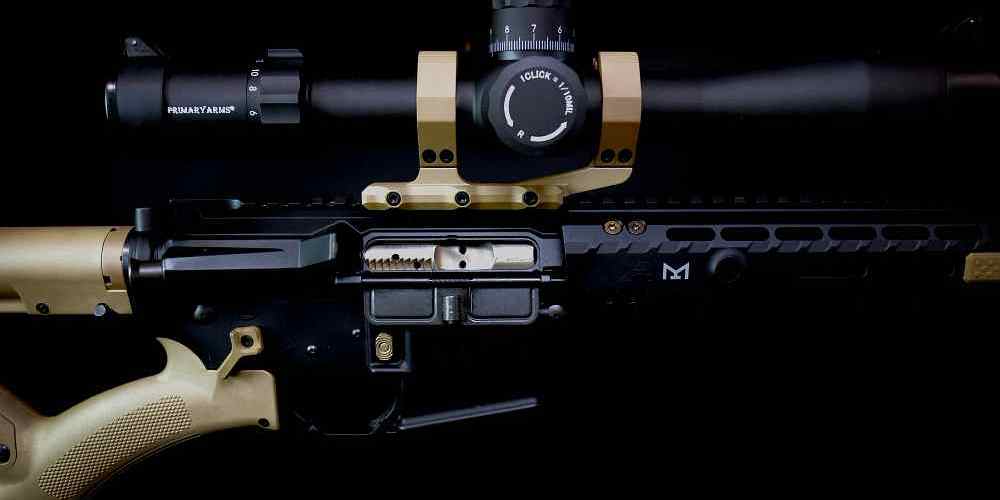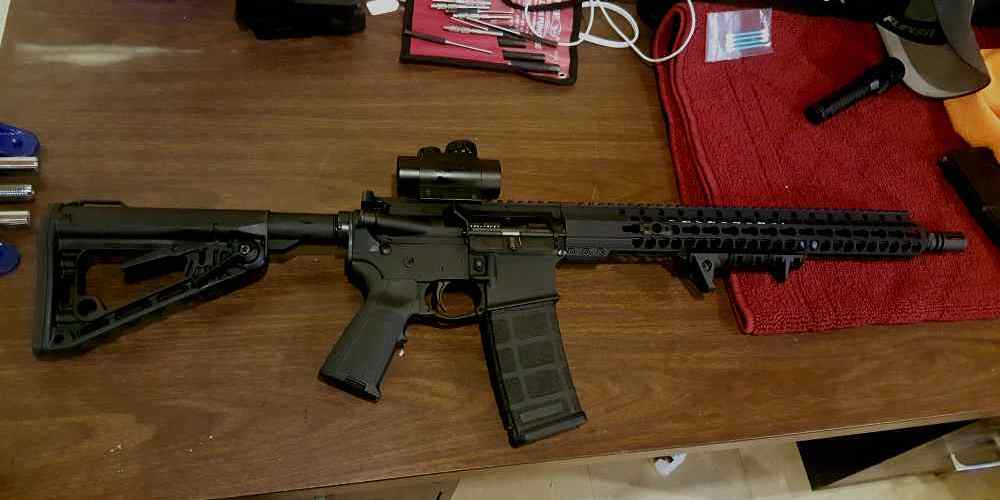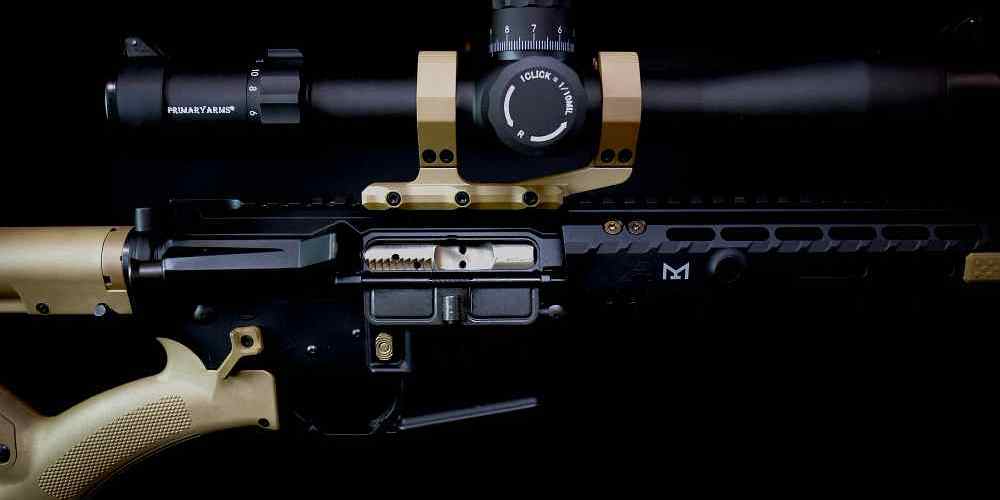“Empower your build with The Home Builder’s Guide to Forging Your Own AR15 Lower”
Benefits of Building Your Own AR15 Lower
Building your own AR15 lower can be a rewarding and fulfilling experience for any home builder. Not only does it allow you to customize your firearm to your exact specifications, but it also gives you a deeper understanding of how your rifle functions. In this article, we will explore the benefits of forging your own AR15 lower and provide you with some tips and tricks to help you get started on your build.
One of the main benefits of building your own AR15 lower is the ability to customize your rifle to your exact preferences. Whether you prefer a specific trigger, stock, or grip, building your own lower allows you to choose every component that goes into your firearm. This level of customization ensures that your rifle is tailored to your shooting style and needs, giving you a more personalized shooting experience.
Another benefit of building your own AR15 lower is the cost savings. While purchasing a complete lower can be expensive, building your own lower allows you to save money by purchasing individual components and assembling them yourself. This can be a more cost-effective option for home builders who are looking to build a high-quality rifle on a budget.
In addition to cost savings, building your own AR15 lower can also be a fun and educational experience. Assembling your lower from scratch gives you a deeper understanding of how your rifle functions and allows you to learn more about the inner workings of your firearm. This hands-on experience can be both rewarding and empowering, giving you a sense of accomplishment as you build your own rifle from the ground up.
When it comes to building your own AR15 lower, there are a few key components that you will need to assemble. These components include the lower receiver, trigger group, buffer tube, stock, and grip. It is important to ensure that all of these components are compatible with each other and that they are installed correctly to ensure the safety and functionality of your rifle.
To get started on your build, you will need to first purchase a lower receiver. This is the main component of your lower and serves as the foundation for your rifle. Once you have your lower receiver, you can begin assembling the rest of your components, starting with the trigger group. The trigger group is responsible for firing your rifle and consists of the trigger, hammer, and disconnector.
Next, you will need to install the buffer tube, stock, and grip. The buffer tube houses the buffer spring and buffer, which help to absorb recoil and cycle the action of your rifle. The stock and grip are both ergonomic components that help you to comfortably hold and shoot your rifle. Once all of your components are installed, you can test fire your rifle to ensure that everything is functioning properly.
In conclusion, building your own AR15 lower can be a rewarding and fulfilling experience for any home builder. Not only does it allow you to customize your rifle to your exact preferences, but it also gives you a deeper understanding of how your firearm functions. With the right components and a little bit of patience, you can build a high-quality rifle that is tailored to your shooting style and needs. So why wait? Start building your own AR15 lower today and experience the satisfaction of forging your own firearm.

Step-by-Step Guide to Building an AR15 Lower
Building your own AR15 lower can be a rewarding and satisfying project for any home builder. Not only does it allow you to customize your firearm to your exact specifications, but it also gives you a deeper understanding of how your rifle functions. In this guide, we will walk you through the step-by-step process of forging your own AR15 lower.
The first step in building your AR15 lower is to gather all the necessary tools and materials. You will need a lower receiver forging kit, which typically includes a lower receiver, trigger guard, and other small parts. You will also need a vise, hammer, punches, and a drill press. Make sure to have all the necessary safety equipment, such as safety glasses and gloves, before you begin.
Once you have all your tools and materials ready, the next step is to start forging your lower receiver. Begin by securing the lower receiver forging in a vise and using a hammer and punches to remove any excess material. Be sure to take your time and work carefully to avoid damaging the receiver.
After you have removed any excess material, the next step is to drill the holes for the trigger guard and other small parts. Use a drill press to carefully drill the holes according to the specifications provided in your lower receiver forging kit. Be sure to double-check your measurements before drilling to ensure accuracy.
Once you have drilled the necessary holes, the next step is to install the trigger guard and other small parts. Use a hammer and punches to carefully install the parts, making sure they are securely in place. Be sure to follow the instructions provided in your lower receiver forging kit to ensure proper installation.
After you have installed all the necessary parts, the final step is to test your AR15 lower to ensure it functions properly. Use a dummy round to test the trigger and safety mechanisms, making sure they operate smoothly. If you encounter any issues, double-check your work and make any necessary adjustments.
Building your own AR15 lower can be a challenging but rewarding project for any home builder. By following this step-by-step guide, you can forge your own AR15 lower and customize your firearm to your exact specifications. Remember to take your time, work carefully, and follow the instructions provided in your lower receiver forging kit. With a little patience and effort, you can build a high-quality AR15 lower that will serve you well for years to come.
Tools and Materials Needed for Building an AR15 Lower
Building your own AR15 lower can be a rewarding and fulfilling project for any home builder. Not only does it allow you to customize your firearm to your exact specifications, but it also gives you a deeper understanding of how your rifle functions. Before you begin this project, it’s important to gather all the necessary tools and materials to ensure a smooth and successful build.
One of the most essential tools you’ll need for this project is an AR15 lower receiver jig. This jig will help guide you through the milling process and ensure that your lower receiver is cut to the correct specifications. Additionally, you’ll need a drill press or milling machine to remove material from the lower receiver. A set of drill bits and end mills will also be necessary to complete the milling process.
In addition to the tools mentioned above, you’ll also need a few materials to complete your AR15 lower build. A quality 80% lower receiver blank is essential for this project. These blanks are not considered firearms by the ATF, making them legal to purchase and build without a background check. You’ll also need a lower parts kit, which includes all the necessary components to assemble the lower receiver.
When selecting a lower receiver blank, it’s important to choose one made from a durable material such as aluminum. Aluminum is lightweight, strong, and corrosion-resistant, making it an ideal choice for your AR15 lower. Additionally, make sure to select a lower parts kit that includes high-quality components such as a trigger assembly, safety selector, and magazine release.
As you gather your tools and materials, it’s important to take your time and familiarize yourself with each component. Understanding how each part fits together will make the assembly process much smoother and more enjoyable. Once you have everything you need, it’s time to begin the build.
Before you start milling your lower receiver, it’s important to carefully read the instructions that came with your jig. These instructions will guide you through the milling process and ensure that your lower receiver is cut to the correct specifications. Take your time and double-check your measurements to avoid any mistakes.
As you begin milling your lower receiver, make sure to wear eye protection and follow all safety precautions. Use a slow and steady pace to remove material from the receiver, being careful not to remove too much material at once. Take breaks as needed to prevent overheating your drill press or milling machine.
Once you have completed the milling process, it’s time to assemble your lower receiver. Start by installing the trigger assembly, safety selector, and magazine release according to the instructions provided in your lower parts kit. Take your time and ensure that each component is properly aligned and secured.
As you complete the assembly process, take a moment to admire your handiwork. Building your own AR15 lower is a challenging and rewarding project that will give you a deeper appreciation for your firearm. With the right tools and materials, you can forge your own AR15 lower and create a custom rifle that is truly one-of-a-kind.
Customization Options for Your AR15 Lower
Building your own AR15 lower can be a rewarding and fulfilling experience for any home builder. Not only does it allow you to customize your firearm to your exact specifications, but it also gives you a sense of pride and accomplishment knowing that you built it yourself. In this guide, we will walk you through the process of forging your own AR15 lower, from selecting the right materials to assembling the final product.
The first step in forging your own AR15 lower is to choose the right materials. The lower receiver is the part of the firearm that houses the trigger group and magazine well, so it is crucial that you select high-quality materials that will withstand the rigors of shooting. Aluminum is the most common material used for AR15 lowers, as it is lightweight, durable, and easy to work with. You can choose from a variety of grades of aluminum, with 7075-T6 being the most popular choice for its strength and durability.
Once you have selected your materials, the next step is to mill out the lower receiver. This process involves removing excess material from the aluminum block to create the shape of the lower receiver. You can use a variety of tools for this process, including a drill press, milling machine, or CNC machine. It is important to take your time and work carefully to ensure that the final product is precise and accurate.
After milling out the lower receiver, the next step is to assemble the trigger group and magazine well. This involves installing the trigger, hammer, and other components into the lower receiver, as well as attaching the magazine well. It is important to follow the manufacturer’s instructions carefully during this process to ensure that everything is assembled correctly.
Once the trigger group and magazine well are installed, the final step is to test fire the AR15 lower to ensure that it functions properly. This involves attaching the upper receiver, inserting a magazine, and firing a few rounds to test for functionality and reliability. If everything functions correctly, congratulations! You have successfully forged your own AR15 lower.
In conclusion, forging your own AR15 lower is a challenging but rewarding experience for any home builder. By selecting the right materials, milling out the lower receiver, assembling the trigger group and magazine well, and testing the final product, you can create a custom AR15 lower that is tailored to your exact specifications. So roll up your sleeves, grab your tools, and get ready to forge your own AR15 lower today!
Legal Considerations When Building Your Own AR15 Lower
Building your own AR15 lower can be a rewarding and fulfilling experience for any home builder. However, before you dive into this project, it’s important to understand the legal considerations that come with building your own firearm. In this guide, we will walk you through the legal aspects of forging your own AR15 lower.
First and foremost, it’s crucial to know that building a firearm for personal use is legal under federal law. As long as you are not prohibited from owning a firearm and you are building the gun for your own personal use, you are within your rights to build your own AR15 lower. However, it’s important to note that selling or transferring a homemade firearm to someone else is illegal without the proper licensing.
When it comes to the AR15 lower receiver, it is considered the firearm itself according to the Bureau of Alcohol, Tobacco, Firearms, and Explosives (ATF). This means that the lower receiver is subject to all federal regulations and must be serialized. When you build your own AR15 lower, you will need to engrave a serial number onto the receiver to comply with federal law.
In addition to federal regulations, it’s also important to be aware of any state laws that may apply to building your own AR15 lower. Some states have additional regulations or restrictions on homemade firearms, so be sure to research and understand the laws in your state before starting your build.
Another important legal consideration when building your own AR15 lower is the use of certain parts or features that may be restricted under federal law. For example, the National Firearms Act (NFA) regulates the use of certain components such as short-barreled rifles, fully automatic firearms, and suppressors. If you plan to incorporate any of these features into your build, you will need to comply with the NFA regulations, which may include additional paperwork and fees.
It’s also worth noting that building your own AR15 lower does not exempt you from background checks or other requirements when purchasing certain parts or components for your build. When buying parts such as a barrel, stock, or trigger, you will still need to follow the same procedures as if you were purchasing a complete firearm from a licensed dealer.
In conclusion, building your own AR15 lower can be a fun and rewarding project, but it’s important to understand and comply with all legal considerations. Make sure to research and understand federal and state laws, engrave a serial number on your lower receiver, and comply with any additional regulations that may apply to your build. By following these guidelines, you can enjoy the process of forging your own AR15 lower while staying within the bounds of the law.




